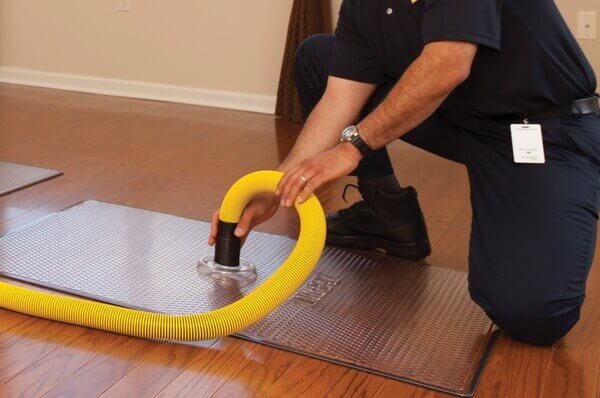Dealing with a sewage backup is an unpleasant and hazardous situation that requires immediate action. Raw sewage contains harmful bacteria, viruses, and other contaminants that can pose serious health risks. If your home or business has experienced a sewage backup, it is crucial to act quickly and follow the proper steps to ensure safety, minimize damage, and restore the affected area. In this guide, we will walk you through the essential steps you should take after a sewage backup, with a focus on hiring a professional Sewage Cleanup Service and considering emergency restoration options.
1. Ensure Safety First
Sewage backups can be dangerous due to exposure to harmful pathogens, toxic gases, and structural damage. Prioritize your safety by following these steps:
- Evacuate the Area: Keep children, elderly individuals, and pets away from the affected area.
- Turn Off Electricity and Water: If sewage has entered rooms with electrical outlets, turn off power to avoid electrocution. Also, stop water usage to prevent further contamination.
- Wear Protective Gear: If you need to inspect the area, wear rubber gloves, waterproof boots, a face mask, and protective eyewear.
2. Identify the Source of the Backup
Understanding the cause of the sewage backup can help prevent future incidents. Common causes include:
- Clogged or Blocked Pipes: Grease buildup, foreign objects, or tree roots can cause blockages.
- Municipal Sewer Problems: Heavy rainfall or sewer line failures can lead to backups.
- Septic System Issues: A full or malfunctioning septic tank can cause overflows.
If the issue is within your property, contact a plumber immediately. If the problem stems from the public sewer line, notify your local municipality.
3. Contact a Professional Sewage Cleanup Service
Attempting to clean sewage without proper knowledge and equipment can be hazardous. Hiring a professional Sewage Cleanup Service ensures:
- Safe removal of sewage and contaminated materials
- Proper disinfection and sanitation to eliminate bacteria and odors
- Structural drying to prevent mold growth
- Compliance with health and safety regulations
Experts use industrial-grade equipment to remove waste and restore your property efficiently, minimizing long-term damage.
4. Begin Emergency Restoration Immediately
Swift action is essential to prevent further damage and mold growth. An emergency restoration team can assist in:
- Water Extraction: Removing contaminated water quickly to prevent structural weakening.
- Dehumidification: Reducing moisture levels to prevent mold and mildew.
- Sanitization and Odor Removal: Disinfecting affected areas with specialized solutions to eliminate bacteria and foul odors.
- Restoration and Repairs: Replacing damaged flooring, drywall, and insulation to restore your home.
Professional emergency restoration services ensure that your property is safe and habitable again as soon as possible.
5. Dispose of Contaminated Items Properly
Not all items affected by a sewage backup can be salvaged. To protect your health, follow these guidelines:
- Throw Away: Carpeting, upholstered furniture, mattresses, paper products, and other porous materials exposed to sewage should be discarded.
- Disinfect Salvageable Items: Hard surfaces such as metal, glass, and plastic can be cleaned with a bleach solution.
- Launder Clothing and Linens: Wash contaminated fabrics separately using hot water and disinfectants.
Proper disposal prevents the spread of bacteria and reduces the risk of lingering contamination.
6. Prevent Mold Growth
Mold thrives in moist environments, making it a major concern after a sewage backup. To prevent mold:
- Dry Out the Area Quickly: Use fans, dehumidifiers, and ventilation to speed up drying.
- Remove Damaged Materials: Discard wet insulation, drywall, and carpeting to prevent mold spores from spreading.
- Schedule a Mold Inspection: If the affected area is extensive, a professional mold remediation service can ensure complete removal.
7. Contact Your Insurance Provider
Depending on your policy, homeowners’ insurance may cover sewage backup cleanup and emergency restoration services. Take these steps:
- Document the Damage: Take photos and videos of the affected areas and damaged items.
- Save Receipts: Keep records of all cleanup expenses, including professional services and replacement items.
- File a Claim Promptly: Contact your insurance provider as soon as possible to initiate the claims process.
An insurance adjuster may inspect your property to assess the damage and determine coverage.
8. Take Preventative Measures for the Future
Once the cleanup and restoration are complete, consider taking proactive steps to prevent future sewage backups:
- Regular Plumbing Maintenance: Schedule routine inspections and cleaning of your sewer lines.
- Install a Backwater Valve: A backwater valve prevents sewage from backing up into your home.
- Dispose of Waste Properly: Avoid flushing non-biodegradable items or pouring grease down the drain.
- Check Tree Roots: If tree roots are an issue, consult a professional for root removal or pipe repair.
Conclusion
A sewage backup is a stressful and hazardous situation that requires immediate action. Prioritizing safety, identifying the cause, and hiring a professional Sewage Cleanup Service ensures thorough cleaning and sanitation. Additionally, emergency restoration services can help prevent further damage and restore your home efficiently. By taking preventative measures, you can reduce the risk of future incidents and keep your home safe and clean.
If you experience a sewage backup, don’t delay—contact a professional service immediately to protect your property and health.
